Importance of Balance While Maneuvering on Uneven Surfaces For SMA Patients
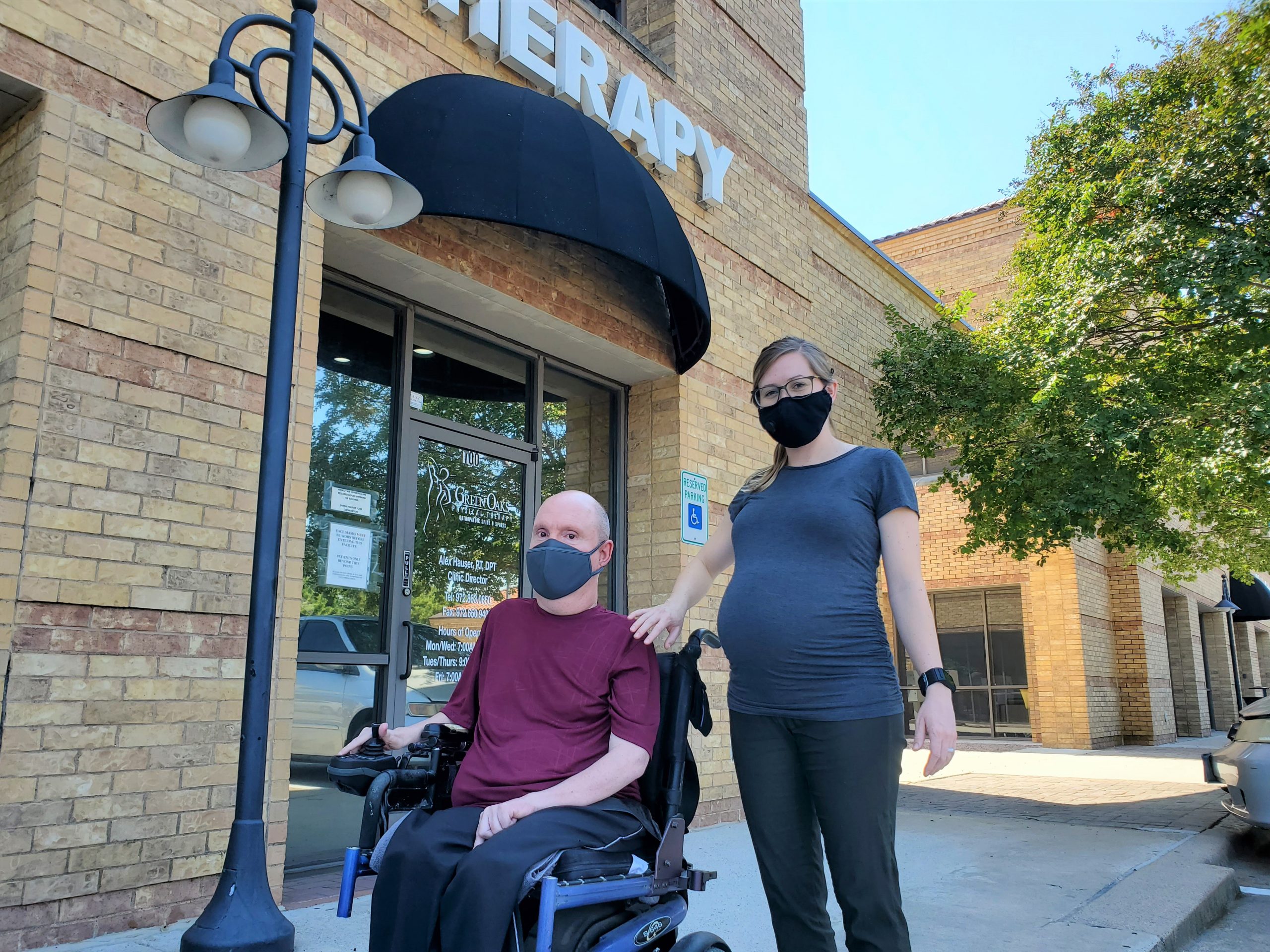
Balance is typically a part of everyone’s treatment plan during physical therapy. Whether you have back pain or ankle pain, improving your balance carries over to an increase in functional mobility that will in turn improve your functional strength and increase your safety, typically assisting to improve the ailment you are attending therapy for. While navigating around daily, we frequently encounter uneven surfaces and unlevel ground that we must negotiate around. While we don’t usually think twice about stepping over a pothole, or keeping our balance while walking across a slanted walkway, we need to realize how much more difficult this is to perform while using a manual or powerchair on a daily basis. Therefore, we should also include focused therapy on balance and strength, while working with patients in wheelchairs, during these instances to ensure they remain safe throughout the day when they encounter these predicaments while living their daily lives.
With my patient with SMA, Michael, we have been working for a very long time on sitting balance while unsupported on a therapy table to carry over to many functional activities, including using his powerchair to navigate around during his daily life. We have now moved onto taking his powerchair outside and improving balance while sitting in his chair and moving around on unlevel and uneven surfaces. We have begun using the wheelchair ramp outside of our clinic, to drive his power chair in uncomfortable and challenging positions, to expose him to these situations and make sure he’s able to control his body in those positions.
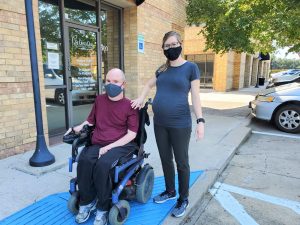

We started these exercises by having him drive his chair sideways across the ramp to put him in compromising positions, while I walked beside him with a hand on his shoulder to ensure his safety. We started on the smallest portion of the ramp with the least amount of incline, to allow him to get used to the exercise. As he became more comfortable, I provided less assistance, and just stood by him to ensure he remained safe, but in a more realistic situation. We then worked on a more incline portion of the ramp, and I instructed him to pause in the middle on the most incline portion of the ramp, and hold the isometric contraction while his chair is positioned sideways, and to keep his body upright as long as he could tolerate before proceeding to the end of the ramp.
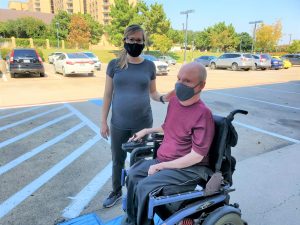
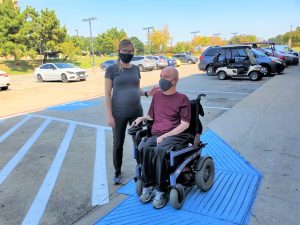
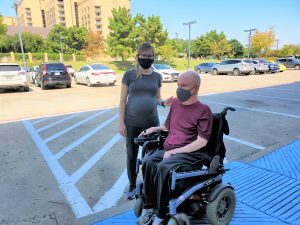
When he is comfortable with these exercises, we plan to move on to navigating through some of the areas of our parking lot that are uneven and may cause him some instability to work through. These exercises will not only help to continue building functional strength and balance for Michael, they will also, possibly more importantly, build his confidence in his own strength and balance to allow for increased freedom throughout his daily life when he may encounter these uncomfortable situations.
======================== Patient Perspective ========================

Imagine the amount of horror I felt, as I was leaning off the left side of my wheelchair, unable to get myself back up into a sitting neutral position. Then, imagine the embarrassment that I felt while I hollered for my caregiver to get out of the van and help me. I think what surprised me the most, was that there were quite a few people going in and out of the store that heard me yelling for my caregiver, and the only thing they did was stop and stare at what was happening. Even though I’ve been in a wheelchair all my life, I never really gave it much thought about some of the dangers that I put myself through on a day-to-day basis. As a child, teenager and even as a young adult, my balance was impeccable. I could maneuver my chair on uneven surfaces, and do things that most able-bodied people would probably shy away from. Maybe I was too young and stupid to realize the dangers that I was putting myself in, but I guess you could chalk that up to youth.
During my normal weekly physical therapy sessions, every one of my therapists have been diligently working to improve my balance, whether it be sitting unassisted without any support, or my sitting balance while in my wheelchair. About 2 years into my therapy, I felt as if my balance was definitely improving, and with this, came a greater amount of confidence that I felt in my abilities. My confidence was shattered one day while I was out shopping with one of my caregivers. We went to Best Buy to purchase something for my computer, and the weather was extremely cold. Instead of parking in a handicapped parking spot, my caregiver dropped me off at the front of the store so that I could get out of the van and go directly into the store without having to roll through the parking lot. As the ramp deployed in my van, and as I started to go down the ramp, I noticed that the walkway that the ramp was on was severely angled to the left. While it only took me about 2 seconds to roll down the ramp, the wheels in my brain started spinning, telling me what I needed to do to compensate for this angled pathway, because I knew that if I wasn’t prepared, I would lose my balance. I immediately shifted my weight to the right side of the wheelchair, and when my front wheels hit the sidewalk, it immediately threw me off balance and I started to lean to the left. The only solution that I had was to turn sharply to the left, hoping that this would throw my body back to the right-hand side of my wheelchair. Unfortunately, this didn’t work, and as I started to fall to the left-hand side of my chair, my hand was pulled away from the joystick on my wheelchair. Fortunately, my seatbelt kept me from falling completely out of my chair, but I was still unable to get back into a neutral sitting position and regain my balance. My caregiver heard me yelling for his help, and he immediately jumped out of the van and came to my aid. Once he got me back into my chair, I looked up, and I noticed that there were about 20 people that were staring at me. Afterwards, I wondered how long they had stared at me in this position, and why they never offered to come over to help. All of these thoughts raced through my mind, but the one thing that I realized was that I still needed to work on my balance, and to realize that I can’t let my confidence dictate what I should and shouldn’t do.
When I went back and I told my therapists what had happened, we immediately started working on improving my sitting balance while on uneven surfaces in my wheelchair. Even though it’s embarrassing to admit when something like this happens, it made me realize just how important my core strength was, and not only how valuable my physical therapy has been, but how valuable this therapy will always be. After working on this for the past year, I feel much more comfortable when maneuvering my chair on these uneven surfaces, but I also know that I will never let my confidence write a check that my butt can’t cover.



